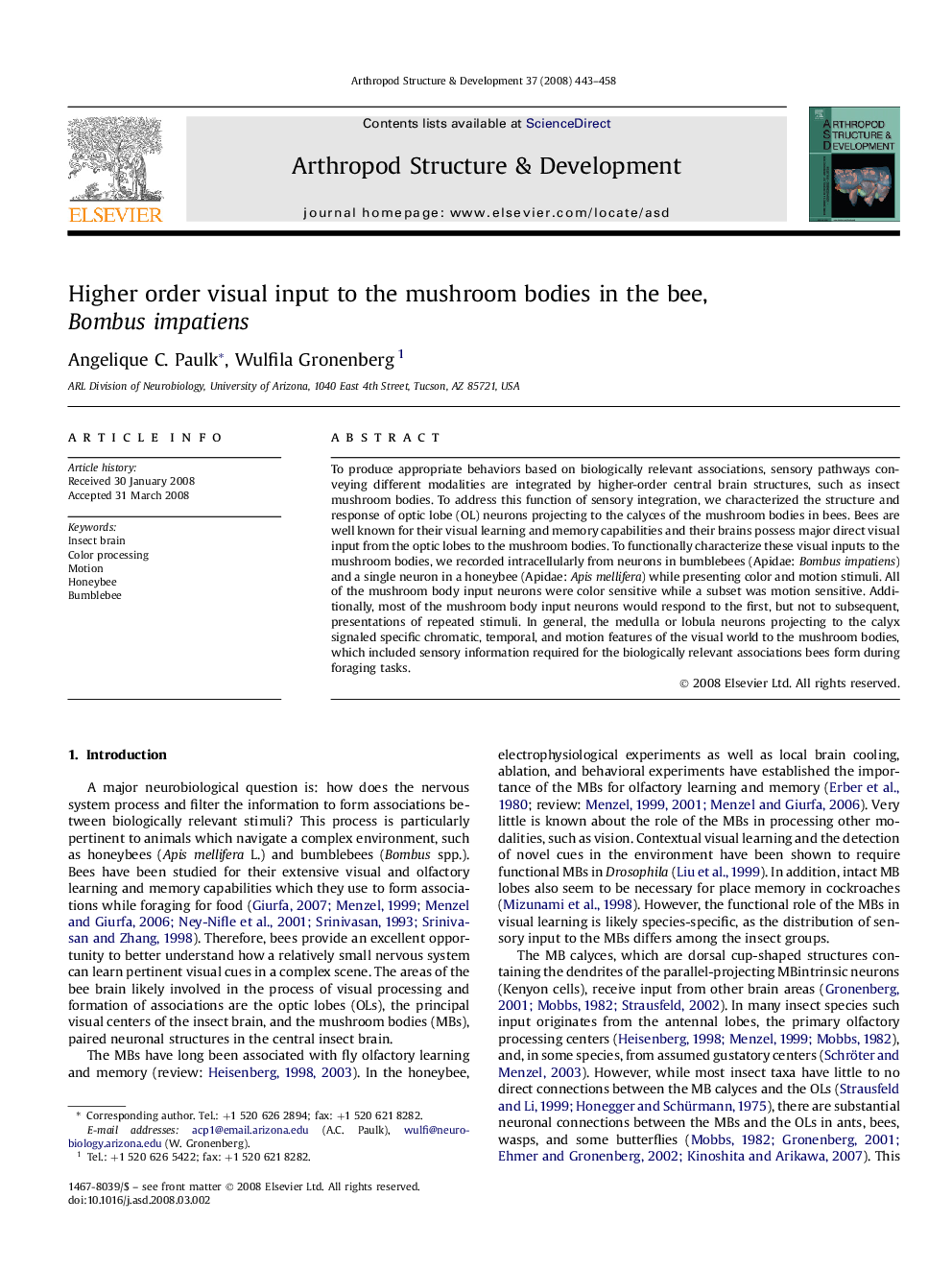| Article ID | Journal | Published Year | Pages | File Type |
|---|---|---|---|---|
| 2778879 | Arthropod Structure & Development | 2008 | 16 Pages |
To produce appropriate behaviors based on biologically relevant associations, sensory pathways conveying different modalities are integrated by higher-order central brain structures, such as insect mushroom bodies. To address this function of sensory integration, we characterized the structure and response of optic lobe (OL) neurons projecting to the calyces of the mushroom bodies in bees. Bees are well known for their visual learning and memory capabilities and their brains possess major direct visual input from the optic lobes to the mushroom bodies. To functionally characterize these visual inputs to the mushroom bodies, we recorded intracellularly from neurons in bumblebees (Apidae: Bombus impatiens) and a single neuron in a honeybee (Apidae: Apis mellifera) while presenting color and motion stimuli. All of the mushroom body input neurons were color sensitive while a subset was motion sensitive. Additionally, most of the mushroom body input neurons would respond to the first, but not to subsequent, presentations of repeated stimuli. In general, the medulla or lobula neurons projecting to the calyx signaled specific chromatic, temporal, and motion features of the visual world to the mushroom bodies, which included sensory information required for the biologically relevant associations bees form during foraging tasks.
